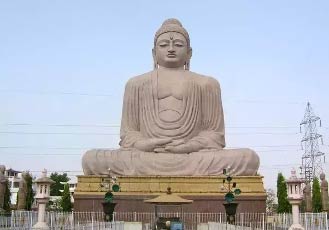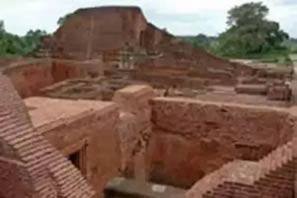THE IMPORTANCE OF PATLIPUTRA (PATNA)
By Baba Vickram Aditya Bedi
Patliputra, is one of South Asia’s oldest continuously inhabited city. The name comes from the Sankskrit “Patan”, which means “port”. As Patna is at the confluence of four rivers the name was very well chosen. In 685 B.C. Patna became the capital of the Haryanka Dynasty, and later of the Nanda Dynasty. This was followed by the rise of the Mauryan Dynasty. Chandragupta Maurya and the world’s first Political Scientist Chanakya (First Prime Minister of the Mauryan Empire), made Patna their capital. Patna then served as capital for United India’s first capital under Emperor Pyadaasi Ashoka in 250 B.C. During the rule of Emperor Ashoka, the second Buddhist Council was held here. During the life of the Buddha, Patna had been central in the development of the Buddhist movement. Following the death of Buddha, the first council was also held here. Much of the life of the Buddha and his quest and success in obtaining enlightenment were written down in the form of the Buddhist texts in Patna. It can be stated that Patna was not just the capital of India during the Mauryan age but that of greater Asia, as it was here, that the Indian culture, Indian Buddhism, and Indian sciences spread throughout Asia and much of the old world.

THE BUDDHA’S STATUE IN PATLIPUTRA, BIHAR, INDIA
During the Mauryan age several notable scholars came to be associated with Patna. Aryabhata, one of Ancient India’s greatest mathematicians, computed the value of Pi to the fourth decimal place; he also described the elliptical orbits of the planets. His explanations of solar and lunar eclipses and days in the year are amazingly accurate even by today’s standards. He was the one who determined that the day begins at midnight. Sanskrit’s greatest grammarian, Panini who created his work on Sanskrit Syntax was also associated with Patna. Today, his work is amazingly similar to modern computer languages and logic- based analytics. One of Buddhism’s greatest poets and playwrights, Ashwaghosh played an incredible role in the culture and literature of Patna. He wrote in classical Sanskrit and had such command over the language and concepts of Buddhism that it was well known that no one could defeat him in public debate. He authored the Indian Classic Buddhacarita, which is the basis of what the modern world knows about the life and times of Buddha. The Kama Sutra was first recorded here. Thus, Patna was a shining image of the first golden age of India. This is how it was recorded by the Greek Pleny the Elder:
"But the Prasii surpass in power and glory every other people, not only in this quarter, but one may say in all India, their capital Palibothra, a very large and wealthy city, after which some call the people itself the Palibothri,--nay even the whole tract along the Ganges. Their king has in his pay a standing army of 600,000 foot-soldiers, 30,000 cavalry, and 9,000 elephants: whence may be formed some conjecture as to the vastness of his resources."
During the Gupta Era, Patna once more became the capital of an International Empire. By 450 A.D., much of Emperor Ashoka’s principles were restored into Indian Governance. A great age of Indian Sciences and Art were centered again in Patna. The great Indian writer and playwright, Kalidas was an inhabitant of Patna. His works include Malavikagnimitram, the story of King Agnimitra, Abhijnanskuntalam, known widely in India as the tale of Shakuntala, and Vikrammorvasiyam, the story of Vikram and Urvashi.
During the Period of the Gupta Dynasty, Patliputra was bestowed with incredible architectural works. With this second Golden age of India, it served as the cultural learning center and as the city of innovation. Modern mathematical theory developed here, along with Geometry and Trigonometric principles, and research. The concepts of the Indian decimal system and the concept of zero were recorded here.

Aryabhata, Ancient India’s mathematical pioneer.
As unity declined in India, after the end of the Gupta period at around 650 A.D., Patliputra become a regional city. In India’s third Golden age, which began during the Rule of Emperor Akbar around 1580, Patna would continue as a regional capital and it became a very wealthy trading center. During the Period of British Colonialism, even as India was drained of its wealth and status as the world’s largest economy, archaeological studies began and revealed the true nature of India’s literature and historical records. Thus, the words of Emperor Ashoka, Chanakya and Chandragupta Maurya, whispered once more to a nation in bondage to again begin the process of unification and freedom. Even in a state of disrepair, Patna remained true to its form as a historical symbol of the greatest accomplishments of Indian History, literature, science and culture.

Air cooling systems for Nalanda University (The world’s oldest university, a new campus is now being built), based upon understanding of separating hot from cool air. 350 B.C.